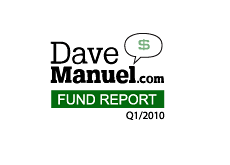Stock Dividends - How Exactly Do They Work? Ex-Dividend Dates, Dividend Yields and More Explained
 Before we get into the explanation of how dividends work, we need to understand exactly what they are.
Before we get into the explanation of how dividends work, we need to understand exactly what they are.A dividend is a payment that is made to a shareholder by a company. Dividends are usually made in the form of cash, but can also be made in stock or in the form of a dividend reinvestment plan, which automatically transfers dividend cash into more shares of the company.
If a company makes money, then they can do two things with it: re-invest the money into the company (called "retained earnings") or pay the money out to shareholders in the form of a dividend. Most companies that pay out a dividend will retain some of their earnings and pay out the rest to their shareholders.
Most dividends are paid out on a quarterly basis. A board of directors can decide to increase, decrease or scrap the dividend altogether depending on how business is going. The amount of a dividend payout is strictly up to the board of directors and no one else.
If a company sold off a small part of itself and received a substantial chunk of cash then it may choose to release some or all of this cash to shareholders in the form of a special dividend. Special dividends tend to be fairly rare occurrences and involve a substantial amount of money.
There are four dates that are important to receivers of dividends:
Declaration Date - the date on which a board of directors announces its intentions to pay out a dividend
Ex-Dividend Date - the last day that you can buy shares and be considered a shareholder of record when it comes to being paid the dividend. So if the Ex-Dividend Date is Nov 13th and you buy shares on November 14th, then you are not eligible to receive that quarter's dividend payment.
Record Date - shareholders must properly register their shares by this date, or else they won't receive the dividend.
Payment Date - the date that shareholders are actually paid the dividend payment
The last important concept to understand regarding dividends is the dividend yield. To calculate the dividend ratio, simply take the amount of dividends paid out over the course of a year in terms of $ value and divide by the current share price of the company. So if we have an annual dividend of $1 per share and the share price is $100, that would mean that we would have a dividend yield of 1%. Obviously, the higher the dividend yield, the better.
You may find cases in which a company has an incredibly high dividend yield. This is normally due to the stock getting taken apart for a particularly ugly piece of news, such as an earnings miss or loss of a big contract. Tread carefully in situations such as these - rarely will the dividend remain intact if the company is suffering through some hardships.
Filed under: Stock Market Education | General Knowledge



